Learning to Paint Like the Old Masters: A Guided Tutorial
This article offers a comprehensive guide to mastering the techniques of classical painting, inspired by the great masters. It covers essential skills, materials, and methods to enhance your artistic journey.
To truly appreciate the art of painting, one must first delve into the lives and works of the Old Masters. These iconic figures, such as Rembrandt and Vermeer, have left an indelible mark on the art world, influencing countless artists through the centuries. Their unique styles, characterized by meticulous attention to detail and innovative techniques, provide a rich foundation for any aspiring painter. By studying their works, you can gain valuable insights into the principles of composition, color, and light that define classical painting. Imagine standing before a Rembrandt portrait, feeling the depth of emotion captured in the brushstrokes, or being captivated by the luminous quality of a Vermeer scene. This connection to the past can inspire your own artistic journey, encouraging you to experiment and develop your personal style.
Before you can begin your painting adventure, it's crucial to gather the right tools and materials. The Old Masters utilized a variety of supplies that helped them achieve their stunning results. Here’s a quick rundown of the essentials you’ll need:
- Brushes: Different shapes and sizes for various techniques.
- Paints: Quality oil paints, tempera, or watercolors.
- Canvas: A sturdy surface, primed and ready for your creativity.
- Mediums: Substances that alter the properties of your paint.
The choice of paint can significantly impact your work. The Old Masters primarily used oil paints, known for their rich colors and versatility. But they also experimented with tempera, a fast-drying medium made from pigments and a water-soluble binder, and watercolors, which allow for delicate washes and transparency. Understanding the properties of these paints will help you select the right one for your project, allowing you to replicate the techniques of the masters.
Brush selection is crucial in classical painting. Each brush type serves a specific purpose, from fine detail work to broad strokes. For instance, a filbert brush is perfect for blending, while a round brush is ideal for intricate details. Investing in a quality set of brushes will enhance your ability to achieve the desired effects and techniques.
Don't underestimate the importance of your canvas. The Old Masters often used linen or cotton canvases, which provided a durable surface for their oil paints. Proper preparation is essential; priming your canvas with gesso ensures that your paint adheres well and lasts for generations. Imagine your artwork being passed down through the ages, a testament to your skill and dedication!
Color theory is a fundamental aspect of classical painting. The Old Masters had an innate understanding of how colors interact, using color mixing and harmony to create depth and emotion in their works. By studying their techniques, you can learn to manipulate color to evoke feelings and enhance the narrative of your paintings.
Mastering the techniques of the Old Masters is essential for elevating your painting skills. Techniques such as glazing, scumbling, and chiaroscuro are not just methods; they are gateways to deeper artistic expression. Each technique offers unique possibilities for enhancing your work, allowing you to create stunning visuals that resonate with viewers.
Glazing is a magical technique that adds depth and luminosity to your paintings. By layering transparent colors, you can create a sense of richness and complexity. Think of it as building a beautiful, intricate tapestry—each layer contributes to the overall beauty of the piece. The Old Masters often employed this technique to achieve stunning effects, making their works appear almost alive.
Chiaroscuro, the technique of using strong contrasts between light and dark, is another hallmark of classical painting. By mastering this technique, you can create a sense of volume and three-dimensionality in your artworks. Imagine the dramatic play of light across a subject's face, highlighting features while casting shadows that add depth and intrigue. This technique can transform a flat canvas into a dynamic scene full of life.
Portrait painting is a true testament to the skills of the Old Masters. It requires a keen eye for anatomy, proportion, and expression. To create lifelike portraits, you must learn to observe your subject closely, capturing their essence on canvas. This process can be both challenging and rewarding, as you translate the unique characteristics of your subject into a work of art.
One of the greatest challenges in portrait painting is accurately capturing the likeness of your subjects. By honing your observation skills and practicing regularly, you can learn to translate facial features onto canvas effectively. Think of your canvas as a mirror reflecting the soul of your subject; the more you practice, the clearer the reflection becomes.
Mixing skin tones can be a complex task, as human skin is full of subtle variations. The Old Masters understood this intricacy, often using a variety of pigments to achieve realistic skin tones under different lighting conditions. By experimenting with your palette and observing how light interacts with skin, you can create portraits that breathe with life.
Still life painting offers a fantastic opportunity to apply classical techniques in a controlled setting. By arranging objects thoughtfully, you can create compelling compositions that tell a story. This practice allows you to focus on composition, lighting, and color choices, honing your skills as an artist.
When creating a still life, the arrangement of objects is paramount. Think of your composition as a puzzle; each piece must fit together harmoniously. Balance and harmony are essential to enhancing the overall visual impact of your artwork. Experiment with different arrangements until you find one that resonates with you.
Lighting plays a crucial role in still life painting. The way light interacts with your objects can create mood and depth, transforming an ordinary scene into something extraordinary. Experiment with different light sources—natural light, artificial light, or even candlelight—to achieve the desired effects in your still life compositions.
As you approach the end of your painting journey, don't overlook the importance of final touches and presentation techniques. These details can elevate your artwork, preparing it for display or sale. Consider how the finishing touches can enhance the overall impact of your piece.
Varnishing is crucial for protecting your artwork and enhancing its appearance. A well-applied varnish can bring out the vibrancy of your colors, giving your painting a professional finish. Understanding the different types of varnishes and their applications will help you choose the right one for your work.
The right frame can significantly enhance the presentation of your artwork. Consider framing options that complement your style and the mood of your painting. A well-chosen frame can draw attention to your work, making it a focal point in any space.
Q: What materials do I need to start painting like the Old Masters?
A: You will need quality brushes, paints (oil, tempera, or watercolor), a primed canvas, and mediums to alter your paint properties.
Q: How can I improve my portrait painting skills?
A: Practice observing your subjects closely, focusing on anatomy and proportion. Regularly sketching and painting from life will also help improve your skills.
Q: What is the best way to learn about color theory?
A: Study the works of the Old Masters, experiment with color mixing, and practice creating harmonious palettes in your paintings.
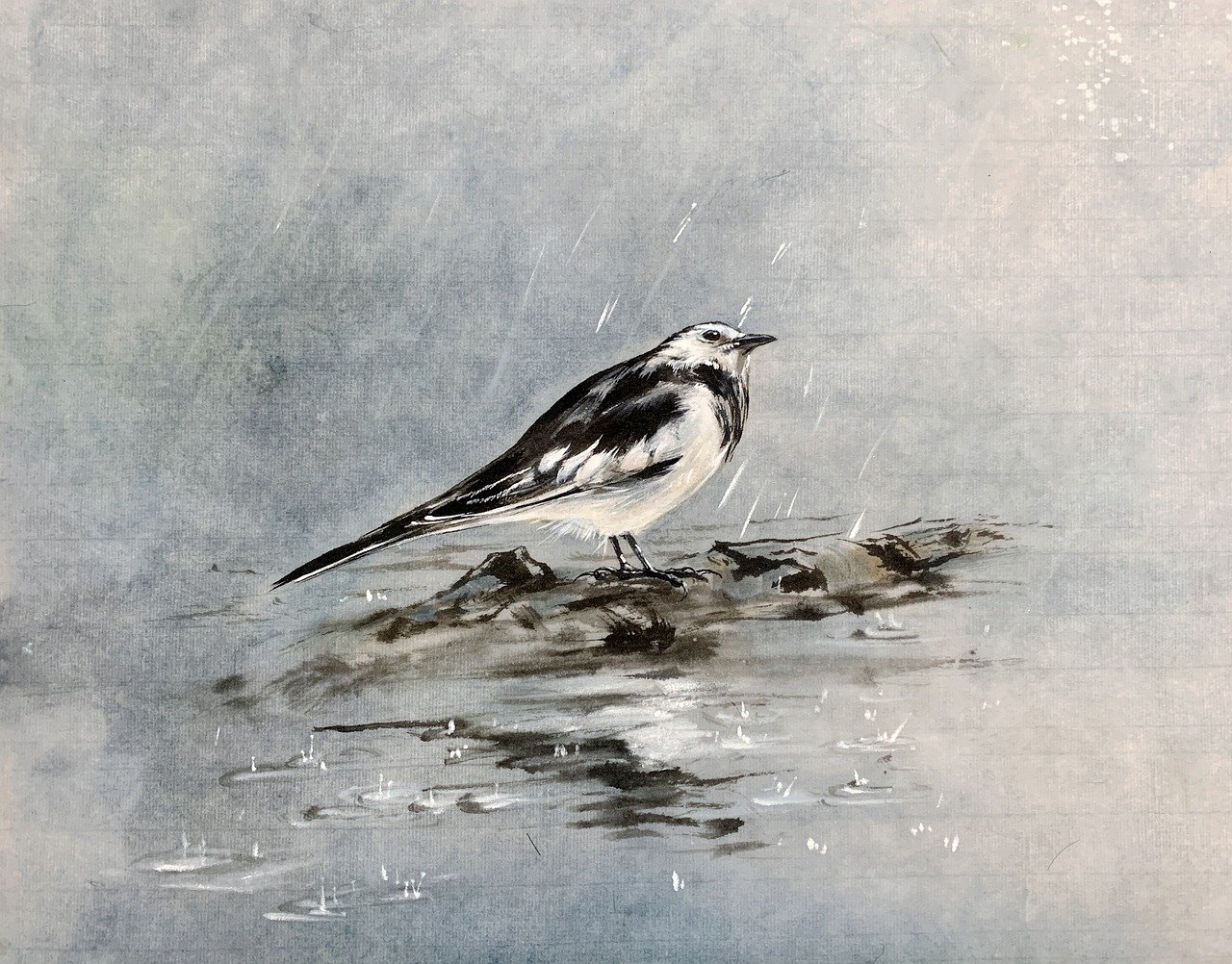
Understanding the Old Masters
When we think of Old Masters, names like Rembrandt, Vermeer, and Caravaggio often come to mind. These artists not only defined their eras but also laid the groundwork for generations of painters to come. Their works are not just paintings; they are stories, emotions, and a reflection of the world they lived in. By diving into their lives and techniques, we can uncover the secrets that made their art truly timeless.
Take Rembrandt, for instance. His mastery of light and shadow created a sense of depth that pulls the viewer into the scene. His portraits are renowned for their emotional depth and realism, showcasing not just the physical likeness of his subjects but their inner lives. Vermeer, on the other hand, captivated audiences with his exquisite use of color and light, often illuminating everyday moments that resonate with viewers even today.
Understanding the Old Masters goes beyond just admiring their works; it involves exploring their unique styles and contributions to art history. Each artist had a distinct approach to composition, color, and technique. For example, Caravaggio's dramatic use of chiaroscuro heightened the emotional impact of his scenes, while Vermeer’s meticulous attention to detail and use of natural light created an ethereal quality in his paintings.
To truly appreciate their genius, consider the following aspects:
- Historical Context: Understanding the time period in which these artists worked can provide insights into their themes and techniques.
- Personal Background: Many Old Masters faced personal struggles that influenced their art, adding layers of meaning to their works.
- Technical Mastery: Their innovative techniques, such as glazing and scumbling, are essential for any aspiring artist to learn.
In essence, the Old Masters serve as a bridge to the past, allowing us to connect with the rich tapestry of human experience through their art. By studying their methods and philosophies, we can not only enhance our painting skills but also enrich our understanding of art as a whole. So, as you embark on your artistic journey, remember that each brushstroke you take is a step into a legacy that has shaped the world of art for centuries.
Q: Who are considered the Old Masters?
A: The term "Old Masters" typically refers to European painters from the 14th to the 18th centuries, including artists like Rembrandt, Vermeer, Titian, and Caravaggio.
Q: Why should I study the techniques of Old Masters?
A: Studying their techniques can provide invaluable insights into composition, color theory, and emotional expression, which are essential for developing your own artistic style.
Q: What materials did the Old Masters use?
A: They primarily used oil paints, but also worked with tempera and watercolor. Their choice of materials greatly influenced their painting techniques and outcomes.
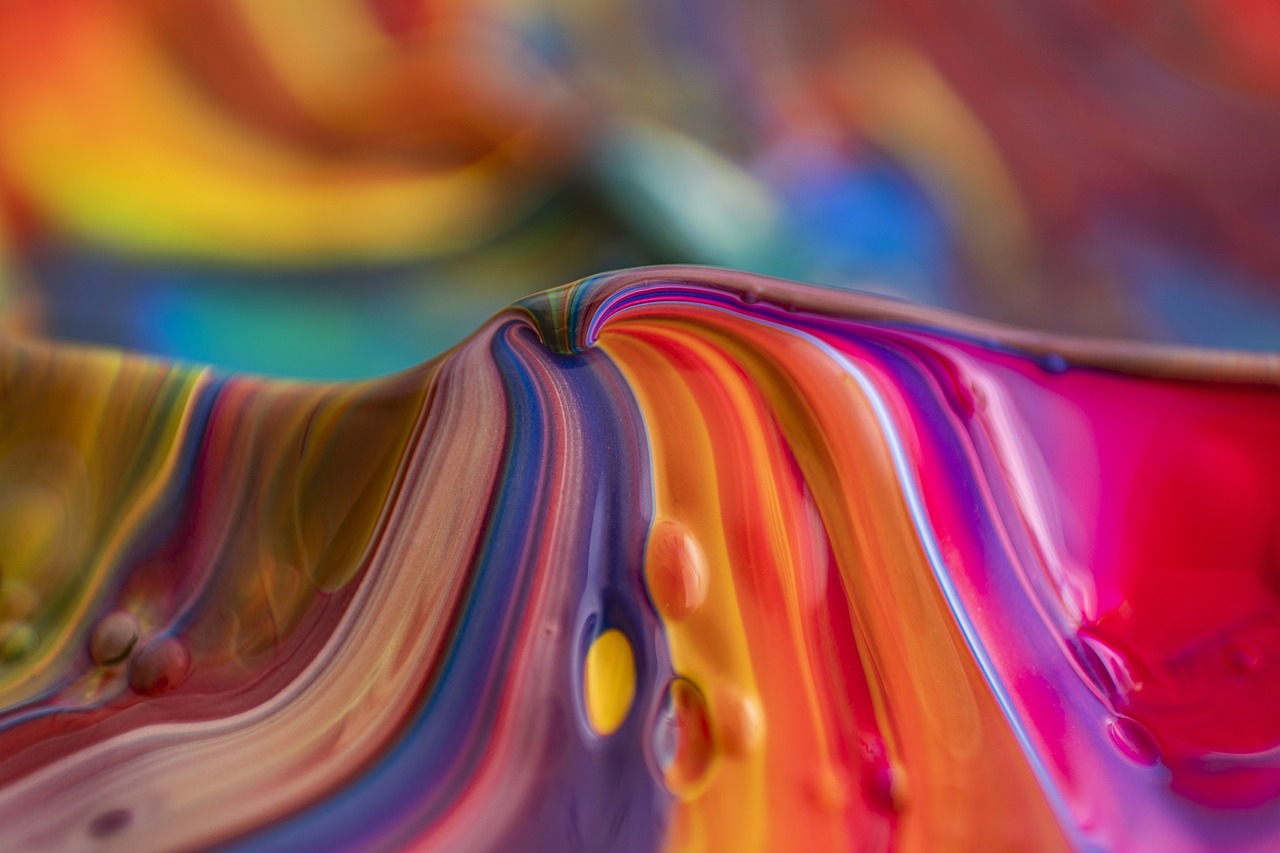
Essential Materials for Classical Painting
When embarking on your journey to master the techniques of the Old Masters, having the right materials is crucial. Think of it as building a sturdy foundation for a house; without it, everything else can crumble. The tools and supplies you choose will significantly affect the quality of your artwork, the ease of your painting process, and ultimately, your satisfaction with the finished piece.
First and foremost, let's talk about paints. The Old Masters primarily used oil paints, which are celebrated for their rich colors and versatility. Unlike other mediums, oil paints allow for a longer working time, enabling artists to blend and layer with finesse. However, they also used tempera and watercolor for specific effects. Each type of paint has its own unique characteristics:
| Type of Paint | Properties | Best Used For |
|---|---|---|
| Oil Paint | Rich, vibrant colors; slow drying time | Layering, glazing, and detailed work |
| Tempera | Fast drying; opaque finish | Flat areas of color; fine detail |
| Watercolor | Translucent; quick drying | Light washes and delicate effects |
Next up are brushes. The right brush can make all the difference in achieving the desired effects in your painting. Old Masters used a variety of brushes, each designed for specific techniques. For instance, a filbert brush is perfect for blending, while a round brush is ideal for detail work. Investing in a good set of brushes is essential, as they will help you manipulate paint in ways that bring your artistic vision to life.
Another critical component is the canvas. The Old Masters often worked on linen canvases that were prepped with gesso to create a smooth surface. This preparation is vital because it ensures that the paint adheres well and allows for easier manipulation. You can also experiment with different surfaces, such as wood panels, which were commonly used in earlier periods, offering a different texture and finish.
Lastly, don't overlook the importance of mediums. These are substances that alter the properties of your paint, affecting its viscosity, drying time, and finish. For example, using a medium like linseed oil can enhance the gloss and fluidity of oil paint, allowing for smoother application and better blending. Understanding how to use these mediums effectively can elevate your work to new heights.
In summary, equipping yourself with the right materials is akin to a chef using quality ingredients to prepare a gourmet meal. By investing in high-quality paints, brushes, canvases, and mediums, you are setting yourself up for success in your classical painting endeavors.
- What type of paint should I start with? If you're new to painting, oil paint is a great choice due to its versatility and blending capabilities.
- Do I need to use expensive materials? While high-quality materials can enhance your work, there are also affordable options that can yield great results. It's about finding the right balance.
- How do I prepare my canvas? Start by applying a layer of gesso to your canvas to create a smooth surface for painting.
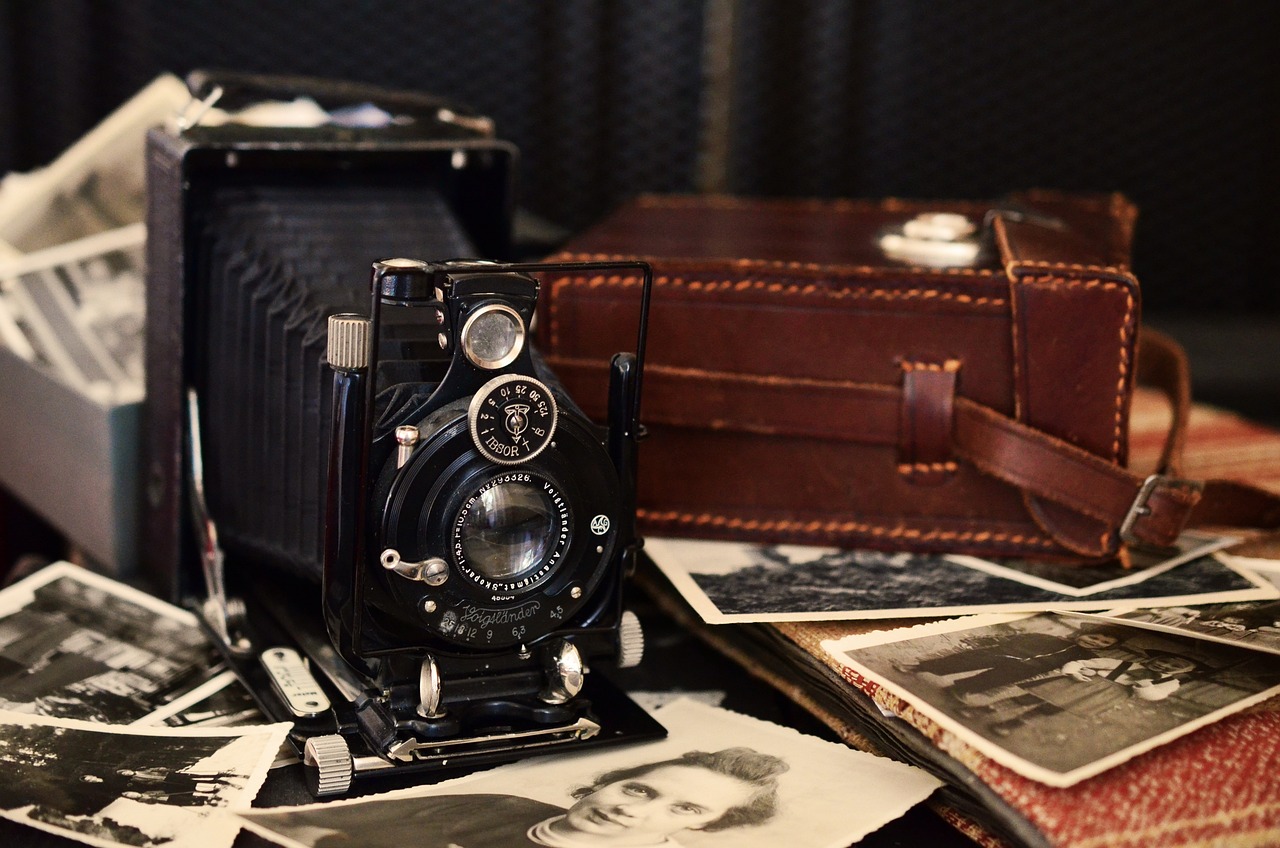
Types of Paints
When it comes to painting like the Old Masters, understanding the they used is crucial. Each type of paint carries its own unique characteristics, influencing the texture, finish, and overall aesthetic of the artwork. The Old Masters primarily utilized three main types of paints: oil, tempera, and watercolor. Each of these paints has its own history, application methods, and visual effects, making them essential to any artist's toolkit.
Oil paint is perhaps the most famous among classical painters. Its rich texture and versatility allow for a wide range of techniques, from thick impasto to delicate glazes. The slow drying time of oil paint enables artists to work on their pieces over extended periods, blending colors and creating intricate details. This medium was favored by masters like Rembrandt and Vermeer, who used it to achieve remarkable depth and realism in their works.
On the other hand, tempera paint offers a different experience. Made from pigments mixed with a water-soluble binder, such as egg yolk, tempera dries quickly and produces a matte finish. This medium was commonly used before the advent of oil paints and is known for its vibrant colors and fine detail. Artists like Botticelli utilized tempera for its ability to create smooth, luminous surfaces that capture light beautifully.
Lastly, we have watercolor, which is a transparent medium that allows for stunning washes of color. While it was not as widely used by the Old Masters for large-scale works, it played a significant role in studies and sketches. Watercolors can create soft blends and delicate details, making them ideal for capturing fleeting moments and atmospheric effects. Artists like Turner and Constable showcased the expressive potential of this medium.
To summarize, here’s a quick overview of the three main types of paints:
| Type of Paint | Characteristics | Famous Artists |
|---|---|---|
| Oil Paint | Rich texture, slow drying, versatile | Rembrandt, Vermeer |
| Tempera Paint | Matte finish, quick drying, vibrant colors | Botticelli |
| Watercolor | Transparent, soft blends, delicate details | Turner, Constable |
Each of these paint types offers unique opportunities for artistic expression. By experimenting with them, you can discover which medium resonates most with your style. Whether you prefer the depth of oil paint, the vibrancy of tempera, or the fluidity of watercolor, mastering these materials will undoubtedly enhance your painting skills and allow you to create works that echo the greatness of the Old Masters.
- What is the best paint for beginners? Oil paint is often recommended for beginners due to its versatility, but tempera and watercolor are also excellent choices for those looking to explore different techniques.
- Can I mix different types of paints? It is generally not advisable to mix different types of paints, as they have different properties and drying times, which can affect the final outcome of your artwork.
- How do I choose the right paint for my project? Consider the desired effect, the time you have for drying, and the techniques you want to use. Each paint type has its strengths, so choose based on your artistic goals.
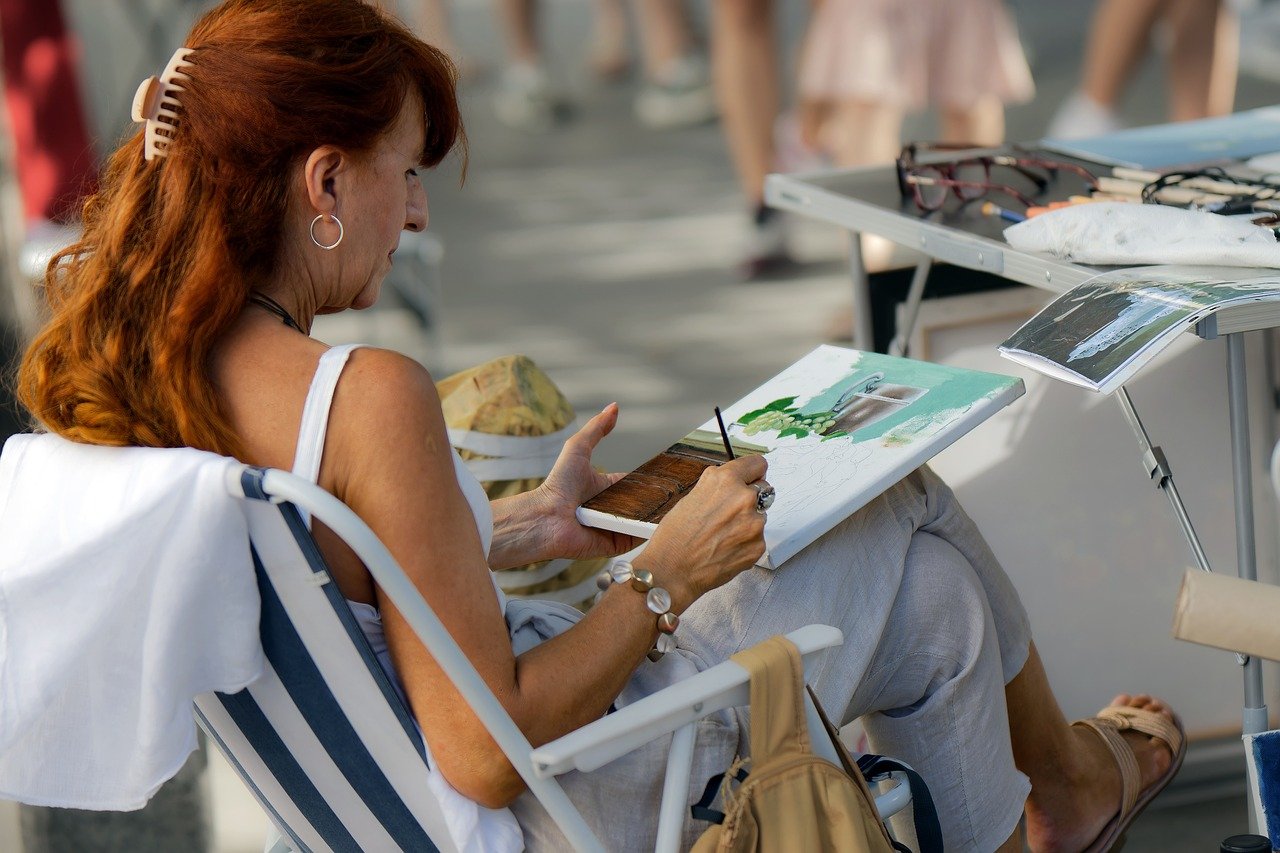
Choosing the Right Brushes
When it comes to classical painting, the brushes you choose can significantly impact your artistic expression. Think of brushes as the instruments of your creativity—just like a musician selects their instrument based on the sound they want to create, you should select brushes that align with your painting style and the effects you wish to achieve. There are various types of brushes, each designed for specific techniques and applications, so understanding their unique characteristics is essential for any aspiring artist.
First off, let's talk about the most common types of brushes you'll encounter:
- Round Brushes: These are versatile and ideal for detail work, allowing you to create fine lines and intricate details.
- Flat Brushes: Perfect for bold strokes and filling in larger areas, flat brushes can also create sharp edges and defined shapes.
- Filbert Brushes: A combination of round and flat, these brushes are excellent for blending and softening edges.
- Fan Brushes: Great for texture, fan brushes can be used to create foliage, clouds, and other natural elements.
Each of these brush types serves a specific purpose, and knowing when to use them can elevate your work to new heights. For instance, if you want to achieve a soft gradient in your painting, a filbert brush would be your best bet. On the other hand, if you're aiming for sharp lines, a flat brush will do the trick. It’s all about understanding how each brush interacts with the paint and the canvas.
Another crucial factor to consider is the material of the brush. Brushes can be made from natural hairs or synthetic fibers, and each type has its own set of advantages:
| Brush Material | Advantages |
|---|---|
| Natural Hair | Excellent paint holding capacity, smooth application, and great for blending. |
| Synthetic Fiber | Durable, easy to clean, and often less expensive than natural hair brushes. |
While natural hair brushes are often favored for their superior quality, synthetic brushes have come a long way and can perform admirably, especially for beginners. So, don't feel pressured to invest in the most expensive brushes right away—focus on finding a few quality brushes that feel comfortable in your hand and suit your painting style.
Finally, consider the size of the brushes you’ll need. A well-rounded brush set typically includes a variety of sizes, allowing you to tackle different aspects of your painting. For instance, a larger brush can cover vast areas quickly, while smaller brushes are essential for detail work. It’s like having a toolbox; you wouldn’t want to tackle a home project with just one tool, right?
In summary, choosing the right brushes is a pivotal step in your painting journey. By understanding the types, materials, and sizes available, you can equip yourself with the tools necessary to bring your artistic vision to life. Remember, the more you experiment and practice with different brushes, the more you'll discover what works best for you. Happy painting!
Q: How do I clean my brushes properly?
A: Cleaning your brushes is crucial for maintaining their quality. Use mild soap and lukewarm water, and gently reshape the bristles after cleaning to keep them in good condition.
Q: How often should I replace my brushes?
A: It depends on usage. If you notice fraying or loss of shape, it's time for a replacement. Generally, a good brush can last for years with proper care.
Q: Can I use the same brush for oil and acrylic paints?
A: While you can use the same brushes for both, it's best to have dedicated brushes for each type of paint to avoid any unwanted mixing of mediums.
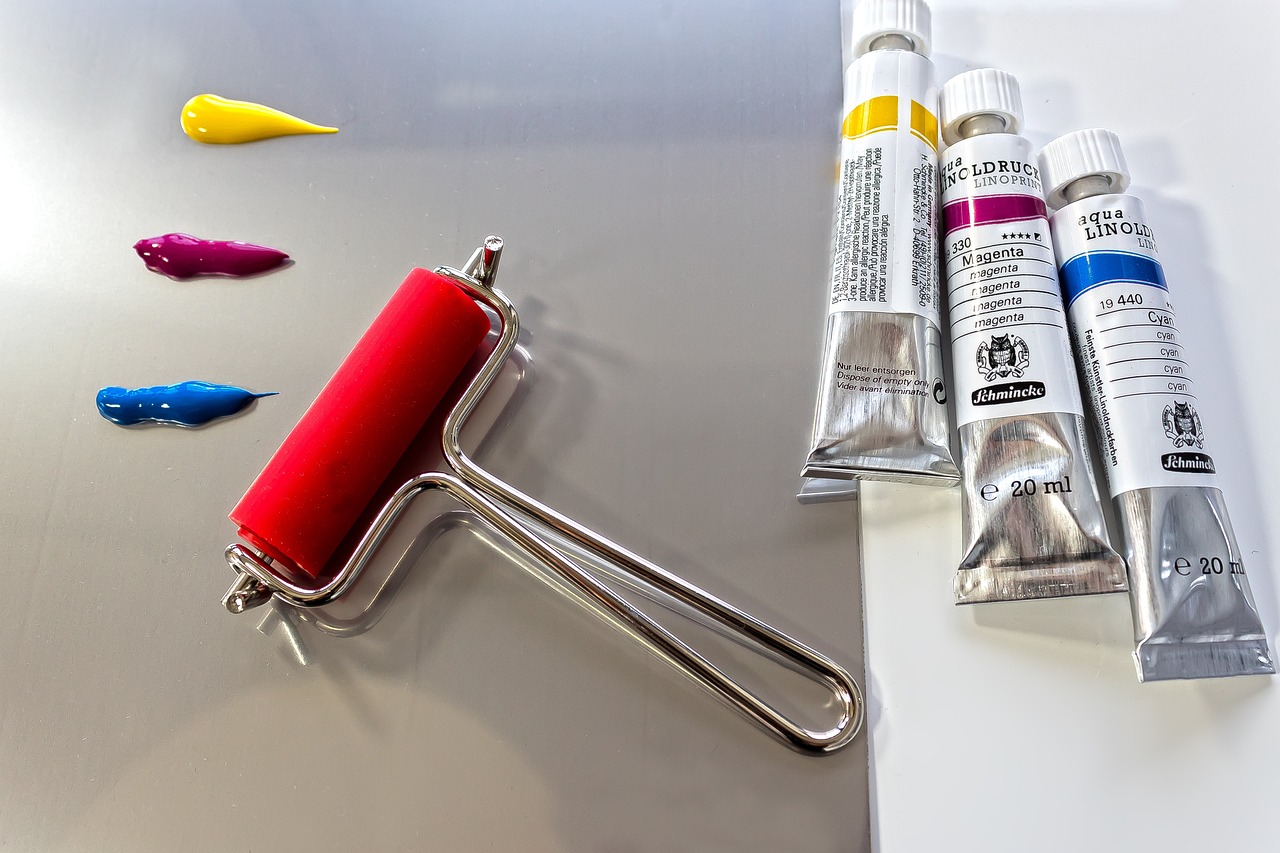
Canvas and Surface Preparation
When it comes to painting like the Old Masters, are crucial steps that should never be overlooked. Think of your canvas as the foundation of a house; without a solid base, everything built on top can crumble. The right preparation not only ensures that your paint adheres properly but also enhances the longevity and vibrancy of your artwork. So, let's dive into the essential aspects of preparing your canvas.
First, you need to choose the right type of canvas. The Old Masters often used linen or cotton canvas, both of which offer unique textures and durability. Linen is known for its strength and ability to hold paint well, while cotton is more affordable and easier to handle for beginners. Once you've selected your canvas, it's time to consider how to stretch it. Proper stretching is vital to prevent sagging or warping over time. Here’s a quick overview:
| Type of Canvas | Characteristics |
|---|---|
| Linen | Durable, holds paint well, ideal for fine details |
| Cotton | More affordable, easier to stretch, good for beginners |
After stretching your canvas, the next step is priming. Priming creates a barrier between the canvas and the paint, preventing the canvas fibers from absorbing too much paint, which can dull colors and affect the texture. You can use a commercial acrylic gesso, which is commonly available, or make your own using rabbit skin glue and chalk. Apply at least two to three coats of gesso, sanding lightly between layers for a smooth finish. This process is akin to applying a base coat before painting your walls; it sets the stage for a flawless application of your artistic vision.
Another important consideration is the surface texture. The Old Masters often worked on a smooth surface to achieve their characteristic fine details and luminous effects. If you prefer a more textured surface, remember that it can alter the way your paint behaves. For example, thicker paint may not settle into the grooves as well, leading to a different finish. Experimentation is key here; try different textures to see what best suits your style.
Finally, consider the environment in which you'll be painting. Ensure that your workspace is well-lit and free from dust and debris. A clean environment not only helps you focus but also protects your artwork from unwanted particles that can mar your final piece. Remember, preparing your canvas is not just a chore; it’s the first step in your artistic journey, setting the tone for everything that follows.
- What type of canvas is best for beginners? Cotton canvas is often recommended for beginners due to its affordability and ease of use.
- How many coats of gesso should I apply? It's recommended to apply at least two to three coats of gesso, sanding lightly in between for a smoother finish.
- Can I paint on an unprimed canvas? While it's possible, it's not advisable as unprimed canvas can absorb too much paint and lead to dull colors.
- What should I do if my canvas sags? If your canvas sags, you may need to re-stretch it or use canvas pliers to tighten it.
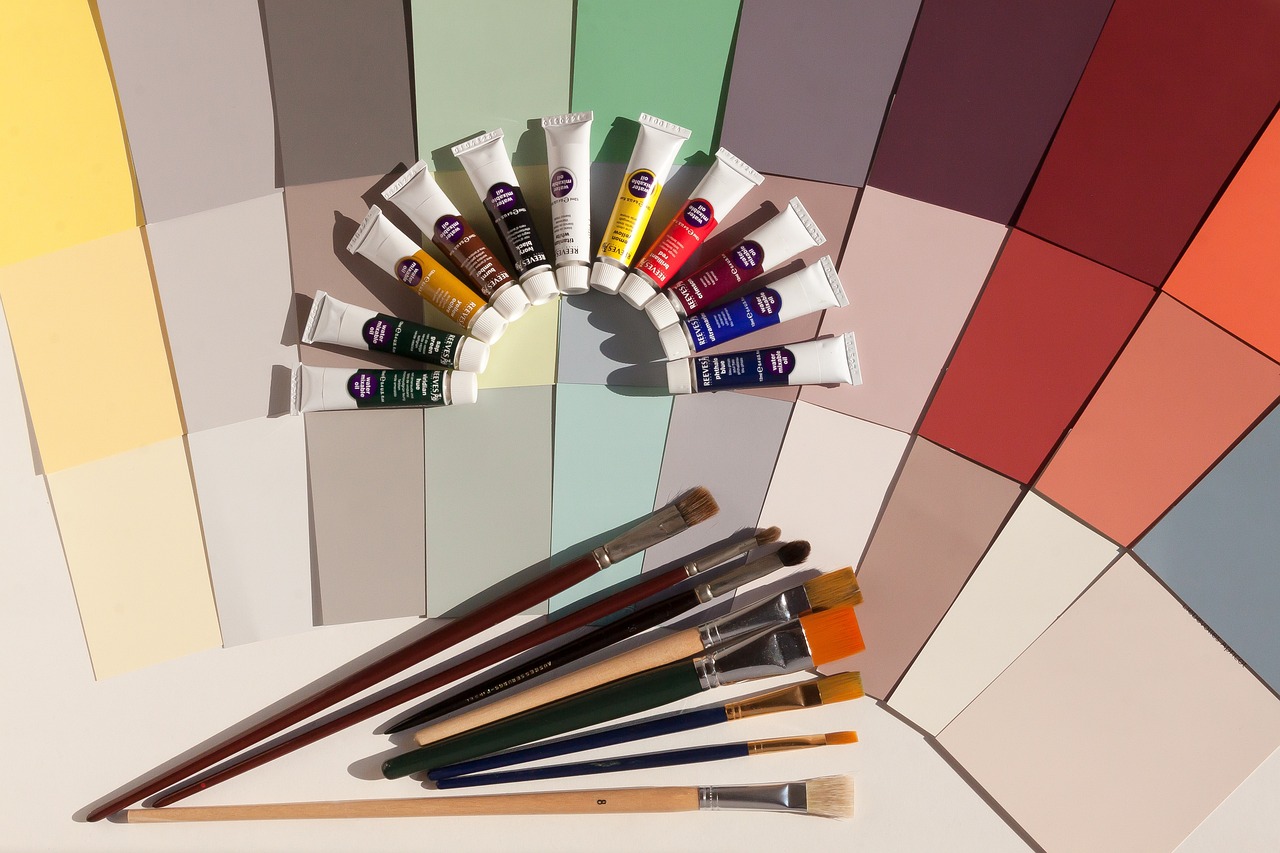
Color Theory in Classical Painting
Color theory is a fundamental aspect of classical painting that greatly influences the emotional and visual impact of a work. The Old Masters meticulously understood and applied color principles to create stunning compositions that resonate with viewers even today. They didn't just slap colors on a canvas; they orchestrated a symphony of hues that could evoke feelings, capture light, and define form. Through their mastery of color, artists like Rembrandt and Vermeer were able to convey mood and depth, making their paintings come alive.
At the heart of color theory lies the color wheel, a tool that helps artists understand the relationships between colors. The Old Masters utilized primary colors—red, blue, and yellow—as the foundation for creating a vast array of secondary and tertiary colors. By mixing these primary colors, they achieved a rich palette that added complexity and vibrancy to their works. For example, mixing red and blue yields purple, while combining yellow and red produces orange. This understanding was crucial for creating the depth and richness that defines classical painting.
In addition to understanding color mixing, the Old Masters also employed the concept of color harmony. This involves using colors that complement each other to create a balanced composition. Complementary colors, which are opposite each other on the color wheel, can create striking contrasts when placed side by side. For instance, the use of green against red can produce a dynamic visual tension that draws the viewer's eye. The Old Masters often used these principles to enhance the emotional undertones of their paintings.
Another vital aspect of color theory is the concept of temperature. Colors are categorized as either warm (reds, oranges, yellows) or cool (blues, greens, purples). The Old Masters skillfully manipulated these temperatures to create atmosphere and depth. Warm colors tend to advance, making objects appear closer, while cool colors recede, giving a sense of distance. This technique is particularly effective in landscape painting, where atmospheric perspective is vital for creating a sense of depth.
Moreover, the Old Masters were keen observers of light and its effect on color. They understood that light can drastically alter the appearance of colors, and they used this knowledge to enhance realism in their works. For example, the way light interacts with a subject can change the perception of its color, introducing subtle variations that bring a painting to life. This is where techniques like glazing come into play, allowing artists to layer transparent colors over one another to achieve luminosity and depth.
To summarize, mastering color theory is essential for anyone aspiring to paint like the Old Masters. By understanding color relationships, harmony, temperature, and the effects of light, you can elevate your painting skills and create works that resonate with viewers on a deeper level. Remember, color is not just a visual element; it's a powerful tool that can convey emotion and narrative, making your artwork truly captivating.
- What is color theory? Color theory is a set of principles used to understand how colors interact, mix, and create visual harmony in art.
- Why is color harmony important? Color harmony helps create balance and unity in a painting, making it more visually appealing and emotionally resonant.
- How did the Old Masters use color temperature? They manipulated warm and cool colors to create depth and atmosphere, influencing how objects are perceived in space.
- What role does light play in color perception? Light affects how colors are seen, and the Old Masters used this knowledge to add realism and vibrancy to their paintings.

Techniques of the Old Masters
When it comes to painting, the Old Masters have set the bar incredibly high. Their techniques are not just a set of skills; they are a way of thinking about art, light, and color that transcends time. Learning these methods can feel like unlocking a treasure chest of creativity. There are several key techniques that these masters employed, each with its own unique flair and purpose. By mastering these methods, you can elevate your own artistic expression and create works that resonate with depth and emotion.
One of the standout techniques is glazing, which involves applying thin, transparent layers of paint over dried layers. This technique allows artists to build up rich colors and create a sense of depth that is simply mesmerizing. Imagine painting a sunset; instead of slapping on a single color, you would layer yellows, oranges, and reds, each one allowing the previous layer to shine through. This not only adds vibrancy but also creates a luminous quality that is hard to replicate with opaque paints.
Another essential technique is chiaroscuro, which is all about the dramatic interplay of light and shadow. This method helps to create a three-dimensional effect on a two-dimensional surface. Think of it as the art of storytelling through contrast—where light reveals the beauty of the subject, and shadow adds mystery. By mastering chiaroscuro, you can make your paintings pop with life, drawing the viewer's eye to the focal points of your composition.
To truly grasp these techniques, it’s vital to understand the underlying principles. For instance, when practicing glazing, consider the following:
- Start with a solid underpainting to establish your values.
- Use a slow-drying medium to allow for blending and manipulation of the paint.
- Layer your glazes gradually; patience is key!
As for chiaroscuro, focus on observing how light interacts with your subject. Notice where the light hits and where shadows form. This observation will guide you in recreating that effect on canvas. Use a limited palette to experiment with the contrast of light and dark, enhancing your understanding of how these elements affect the mood of your painting.
Incorporating these techniques into your practice can be incredibly rewarding. It’s not just about replicating what the Old Masters did; it’s about understanding the philosophy behind their methods and applying that knowledge to your own artistic journey. As you experiment with glazing and chiaroscuro, remember to be patient with yourself. Mastery takes time, but each stroke brings you closer to your goal.
Q: What is glazing, and how do I start using it?
A: Glazing is the technique of applying transparent layers of paint over dried paint. To start, create a solid underpainting and use a slow-drying medium to mix your glazes. Begin with light colors and gradually build up to darker shades.
Q: How can I improve my chiaroscuro technique?
A: To enhance your chiaroscuro skills, practice observing real-life light and shadow. Use a limited palette to focus on the contrast between light and dark, and try to capture that in your paintings.
Q: Are there specific brushes I should use for these techniques?
A: Yes! For glazing, use soft, round brushes that allow for smooth application. For chiaroscuro, a flat brush can help create sharp contrasts, while a round brush can be used for blending.

Glazing Techniques
Glazing techniques are a hallmark of classical painting, allowing artists to achieve a sense of depth and luminosity that is simply breathtaking. When you think about glazing, imagine a beautiful stained glass window; each layer of color adds richness and complexity to the overall effect. The Old Masters mastered this technique, utilizing it to create stunning visual narratives in their work. So, how exactly do you dive into the world of glazing? Let’s break it down.
At its core, glazing involves applying thin, transparent layers of paint over a dried layer of opaque paint. This method not only enhances the vibrancy of the colors but also allows the underlying tones to influence the final appearance. The key here is to use a medium that retains transparency while ensuring that the paint adheres properly. Traditional oil paints are often used for glazing, combined with a suitable medium like linseed oil or a glazing medium specifically designed for this purpose.
To effectively employ glazing in your artwork, consider the following steps:
- Start with a solid base: Make sure your underpainting is well-established. This could be a monochromatic layer that sets the tonal foundation.
- Choose your colors wisely: Select colors that will complement the base layer. For instance, a warm underpainting can be enhanced with cooler glazes to create depth.
- Thin your paint: Use a medium to thin your paint to a transparent consistency. The goal is to allow the underlying layers to shine through.
- Apply in layers: Build up your glazes gradually. Patience is key here; allow each layer to dry before applying the next to avoid muddying your colors.
One of the most exciting aspects of glazing is the ability to create optical effects. For instance, layering a transparent blue glaze over a warm yellow base can produce a stunning green hue that feels alive and dynamic. This layering effect can also be used to create shadows and highlights, adding to the three-dimensionality of your painting.
Additionally, it's essential to understand the drying times of your materials. Oil paints can take days to weeks to dry completely, depending on the thickness of the application and environmental conditions. This slow drying time allows artists to manipulate the glazes over time, creating subtle adjustments that can dramatically change the visual impact of the piece.
In summary, mastering glazing techniques opens up a world of possibilities in your painting practice. By layering transparent colors, you can achieve a depth and richness that is reminiscent of the works of the Old Masters. So, grab your brushes, select your colors, and start exploring the luminous world of glazing!
Q: What is the best medium for glazing?
A: Linseed oil is a popular choice, but glazing mediums specifically designed for this purpose can also be used for better control and drying times.
Q: How long should I wait between glazes?
A: It’s best to wait until each layer is completely dry before applying the next. This can take anywhere from a few days to a week, depending on the thickness of your application.
Q: Can I use glazing techniques with acrylic paints?
A: Yes, acrylics can also be used for glazing. Just ensure you thin the paint adequately and work quickly, as acrylics dry much faster than oils.
Q: How many layers of glaze should I apply?
A: There’s no set number; it depends on the effect you want to achieve. Start with a few layers and build up as needed, keeping in mind that each layer adds depth.

Chiaroscuro: Light and Shadow
Chiaroscuro, a term derived from the Italian words for "light" (chiaro) and "dark" (scuro), is a fundamental technique that has been used by artists for centuries to create a sense of depth and volume in their paintings. This method relies on the strong contrasts between light and dark to produce a three-dimensional effect, making your subjects appear more lifelike and dynamic. Imagine walking into a dimly lit room where a single beam of light illuminates a figure; the way the shadows play across the contours of the face and body captivates the viewer and draws them into the scene. This is the magic of chiaroscuro.
To successfully employ chiaroscuro in your artwork, it's essential to understand the relationship between light and shadow. The key is to observe how light interacts with objects in your environment. For instance, consider the following aspects:
- Light Source: Identify where the light is coming from. Is it natural light from a window, or is it artificial lighting? The direction and intensity of the light will dramatically affect the shadows.
- Form and Texture: Different materials reflect light differently. A shiny surface will create sharper highlights, while a matte surface will have softer transitions between light and shadow.
- Color Temperature: The color of the light can influence the overall mood of your painting. Warm light can create inviting, soft shadows, while cool light can evoke a more dramatic, stark contrast.
To practice chiaroscuro effectively, start with simple objects. Set up a still life with a single light source and observe how it casts shadows and highlights. You can create a small table setup with a few items, like a fruit bowl or a vase, and experiment with different angles of light. As you paint, focus on the transitions between light and dark. Use a range of values from deep blacks to bright whites to enhance the illusion of depth.
One of the most famous artists known for his mastery of chiaroscuro is Caravaggio. His works are prime examples of how this technique can be used to tell a story and evoke emotion. By studying his paintings, you can gain insights into how he utilized light to create drama and focus within his compositions. Try to analyze how he places light on his subjects and how the shadows contribute to the overall narrative of the piece.
Incorporating chiaroscuro into your painting practice will not only enhance your technical skills but also deepen your understanding of light and form. As you become more comfortable with this technique, you’ll find that it opens up new avenues for creativity and expression. Remember, the goal is to create a harmonious balance between light and shadow, allowing your artwork to breathe and come alive.
What is chiaroscuro?
Chiaroscuro is a painting technique that uses strong contrasts between light and dark to create a sense of volume and three-dimensionality in artwork.
How can I practice chiaroscuro?
To practice chiaroscuro, set up a still life with a single light source and observe how it casts shadows and highlights on the objects. Focus on the transitions between light and dark as you paint.
Who are some artists known for using chiaroscuro?
Caravaggio is one of the most famous artists known for his mastery of chiaroscuro. Other notable artists include Rembrandt and Leonardo da Vinci.
What materials are best for practicing chiaroscuro?
You can practice chiaroscuro with various materials, but oil paints are particularly effective due to their ability to blend smoothly and create subtle transitions.

Practicing Portrait Painting
Portrait painting is not just an art form; it’s a deeply personal journey into the essence of the human spirit. When you set out to create a portrait, you're not merely replicating a face; you're capturing a story, an emotion, and a moment in time. The Old Masters excelled in this realm, and their techniques can guide you in honing your skills. To truly master portrait painting, you need to focus on several key elements: anatomy, proportion, and expression. Each of these aspects plays a vital role in bringing your subject to life on the canvas.
Understanding anatomy is crucial. You don’t have to become a medical expert, but having a basic knowledge of the human skull and facial muscles will help you depict your subject more accurately. Think of the face as a landscape with hills and valleys; the cheekbones rise, while the jawline dips. When you grasp these forms, you’ll find that your brushwork can reflect the underlying structure, making your portraits more lifelike.
Next comes proportion. The human face is a marvel of symmetry, yet every individual has unique features that set them apart. A helpful exercise is to measure the distances between key points on the face—like the eyes, nose, and mouth—and compare them to the overall dimensions. This will guide you in placing features correctly. For example, did you know that the eyes are typically located halfway down the head? By keeping these proportions in mind, you can avoid common pitfalls that lead to distorted or unrealistic representations.
Expression is where your portrait truly comes alive. Capturing the subtle nuances of emotion can be the difference between a good painting and a great one. Observe your subject closely; notice how their eyes light up when they smile or how their brows furrow in thought. These small details convey a wealth of information about their character. Try to translate these observations onto your canvas. It’s like trying to catch a fleeting moment in a bottle; the more you practice, the better you’ll become at preserving these moments.
As you embark on your portrait painting journey, consider these techniques:
- Start with a sketch: Lightly outline the basic shapes and proportions before committing to paint.
- Use a limited palette: Start with a few colors to avoid overwhelming yourself and to learn how to mix skin tones effectively.
- Layer your paint: Build up your painting gradually, allowing each layer to dry before adding more details.
Finally, remember that practice makes perfect. Don’t be discouraged by initial attempts that don’t meet your expectations. Each stroke is a step toward mastery. Set aside time to paint regularly, and consider working from photographs or live models. Over time, you’ll develop your own style and techniques that reflect your unique vision.
In conclusion, practicing portrait painting is an enriching experience that combines technical skill with emotional depth. By focusing on anatomy, proportion, and expression, and by employing the techniques of the Old Masters, you can create portraits that resonate with viewers and capture the essence of your subjects.
- What materials do I need to start portrait painting? You will need a good set of brushes, a palette, paints (preferably oils or acrylics), and a canvas or paper.
- How can I improve my skills in portrait painting? Regular practice, studying anatomy, and seeking feedback from fellow artists can significantly enhance your skills.
- What is the best lighting for portrait painting? Natural light is often the best, but you can also use soft artificial lighting to avoid harsh shadows.

Capturing Likeness
Capturing the likeness of your subject is one of the most challenging yet rewarding aspects of portrait painting. It’s not merely about replicating features; it’s about embodying the essence and personality of the individual on canvas. Think of it as creating a bridge between the observer and the observed, where every brushstroke communicates a story. To achieve this, you’ll need to cultivate a keen eye for detail and an understanding of human anatomy.
Start by observing your subject closely. Notice the unique characteristics that define them, such as the shape of their eyes, the curve of their lips, and the structure of their jawline. These details are your building blocks. It can be helpful to create a grid system on your canvas and your reference photo. This technique allows you to break down the face into manageable sections, making it easier to capture proportions accurately. Remember, the goal is not just to reproduce what you see but to convey the spirit of the person.
When sketching, focus on the major shapes rather than getting bogged down in fine details. For instance, the head can be simplified into basic geometric forms. Use light lines to outline the general placement of features before committing to darker, more defined lines. This method gives you the flexibility to adjust proportions as you go, which is crucial for achieving a true likeness.
Another vital aspect is understanding the play of light and shadow on the face. Chiaroscuro, the technique of using strong contrasts between light and dark, can help you model the features of your subject. Pay attention to how light falls on the face, creating highlights and shadows that add depth and dimension. This technique not only enhances the realism of your portrait but also brings out the emotions and character of the subject.
As you paint, regularly step back and assess your work from a distance. This practice helps you see the overall composition and likeness more clearly. Sometimes, when you’re too close to the canvas, it’s easy to lose perspective. If something feels off, don’t hesitate to make adjustments. Art is a dynamic process, and flexibility is key to capturing that elusive likeness.
Lastly, remember that capturing likeness is as much about feeling as it is about technique. Engage with your subject, ask them questions, and observe their reactions. This connection can inform your work, allowing you to create a portrait that resonates on a deeper level. In essence, capturing likeness is about more than just painting a face; it’s about telling a story that reflects the person’s soul.
- How can I improve my observation skills?
Practice sketching from life regularly. The more you draw, the better your eye will become at noticing subtle details. - What tools do I need to capture likeness effectively?
A good set of pencils, a reliable eraser, and a quality canvas or sketchbook are essential. Additionally, a mirror can help you see your subject’s features from different angles. - Is it necessary to use a grid for every portrait?
No, while a grid can be helpful, especially for beginners, many artists prefer to work freehand once they gain confidence in their skills.

Understanding Skin Tones
When it comes to painting, understanding skin tones is like unlocking a treasure chest of creativity. It’s not just about slapping on a color and calling it a day; it’s about diving deep into the subtleties that make skin come alive on canvas. Think of skin tones as a beautiful gradient, ranging from the lightest ivory to the deepest ebony, with countless shades in between. Each individual has unique undertones that can significantly affect how you mix your colors.
To master this art, you need to consider several factors:
- Undertones: These can be warm (yellow, peach, or golden), cool (pink, red, or blue), or neutral (a mix of both). Understanding these will help you create a more lifelike representation.
- Lighting: The way light interacts with skin can change its appearance dramatically. Natural light, artificial light, and even the time of day can alter how we perceive skin tones.
- Environment: The background and surrounding colors can also influence how skin tones are viewed. For instance, a warm background can make skin appear warmer, while a cool background can have the opposite effect.
Here’s a simple table to illustrate some common skin tones and their corresponding RGB values (used in digital art but can be a helpful reference for traditional mixing as well):
| Skin Tone | RGB Value |
|---|---|
| Light Ivory | (255, 224, 189) |
| Peach | (255, 178, 102) |
| Medium Olive | (204, 153, 102) |
| Tan | (153, 102, 51) |
| Deep Brown | (101, 67, 33) |
As you mix your colors, remember that skin is not a flat tone; it has depth, shadows, and highlights. A common practice among the Old Masters was to use a base color and then layer additional tones to create dimension. For example, a base of light peach can be enhanced with subtle glazes of pink for highlights and a touch of brown for shadows. This layering technique will give your portraits a realistic and vibrant quality.
Another important aspect to consider is the effect of different lighting conditions on skin tones. In bright sunlight, skin may appear washed out, while in shadow, it can take on a richer, deeper hue. Experiment with different lighting setups and observe how your subject's skin changes. This practice will not only improve your ability to mix colors but also enhance your observational skills, a crucial aspect of portrait painting.
In conclusion, understanding skin tones is fundamental to creating lifelike portraits. By considering undertones, lighting, and environmental influences, you can mix colors that not only resemble reality but also evoke the emotions and character of your subjects. So grab your palette, and let’s start mixing those beautiful skin tones!
Q: What is the best way to mix skin tones?
A: Start with a base color that resembles your subject's skin tone, then gradually add small amounts of other colors to adjust the tone. Remember to consider undertones and lighting.
Q: How do I know if my skin tones look realistic?
A: Compare your painting with a reference photo under similar lighting conditions. Pay attention to the subtleties and variations in color.
Q: Can I use acrylics to paint skin tones?
A: Absolutely! Acrylics can be used effectively to create skin tones. Just remember to mix thoroughly and layer appropriately for depth.
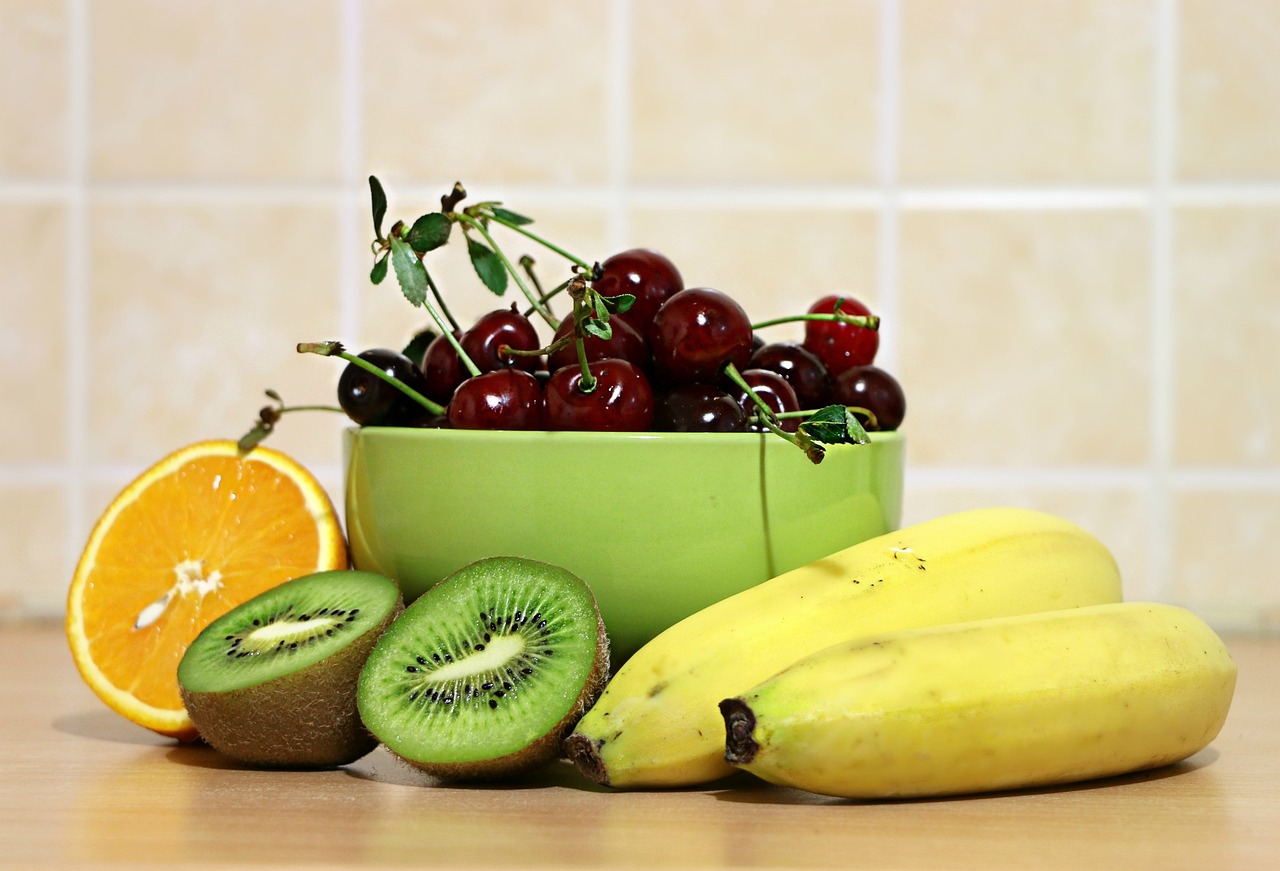
Creating Still Life Compositions
Creating still life compositions is an exciting way to apply the techniques of the Old Masters in a controlled environment. In essence, a still life allows you to explore the nuances of composition, lighting, and color choices without the unpredictability of live subjects. Just imagine setting up a beautiful arrangement of fruits, flowers, or everyday objects—it's like creating your own little world on canvas! The key to a striking still life lies in how you arrange the objects, the light you use, and the colors you choose.
When it comes to arranging objects, consider the principles of balance and harmony. You want to create a composition that draws the viewer's eye across the canvas. Think of your arrangement as a conversation between the objects; they should complement each other. You might want to start by placing a focal point—perhaps a vibrant red apple or a delicate vase—then build around it. Remember, the rule of thirds can be a helpful guideline; placing your main subject off-center can create a more dynamic composition.
Next, let’s dive into the importance of lighting techniques. The way light interacts with your objects can dramatically affect the mood and depth of your painting. Natural light is often the best choice for still life; it creates soft shadows and highlights that bring your composition to life. Experiment with different light sources—like a single lamp or sunlight streaming through a window—to see how they transform your setup. You might find that certain objects reflect light differently, adding an extra layer of complexity to your work.
As you paint, pay close attention to the color choices you make. The Old Masters were masters of color harmony, knowing exactly how to mix and layer colors to achieve depth and realism. Start with a limited palette and gradually introduce more colors as you gain confidence. This approach not only simplifies the process but also helps you understand how colors interact with one another. For example, consider how a splash of complementary color can make your focal object pop against a more subdued background.
Finally, don’t forget to step back and evaluate your work periodically. Sometimes, the best way to see your composition is to view it from a distance. This can help you identify areas that need adjustment, whether it's a color that feels off or an object that seems out of place. Remember, painting is a journey, and each still life composition you create is an opportunity to learn and grow as an artist.
- What materials do I need to start creating still life compositions? You will need a canvas, brushes, paints (preferably oil or acrylic), and a selection of objects for your composition.
- How can I improve my composition skills? Practice is key! Set up different arrangements and experiment with various lighting conditions. Study works by Old Masters for inspiration.
- What should I focus on when painting a still life? Pay attention to the arrangement of objects, the interplay of light and shadow, and the color harmony throughout your composition.

Arranging Objects
When it comes to creating a captivating still life painting, the arrangement of objects is crucial. Think of your composition as a stage where each element plays a role in telling a story. To start, consider the balance of your arrangement. A well-balanced composition draws the viewer's eye and creates a sense of harmony. You can achieve this by distributing objects evenly across your canvas, both visually and spatially.
Another important aspect to keep in mind is the focal point. Every great painting has a center of interest that captures attention. This could be a striking fruit, an elegant vase, or a textured fabric. Once you identify your focal point, arrange the surrounding objects to lead the viewer’s gaze towards it. This can be done through the use of lines, shapes, and even color contrast.
Don't forget about varying heights and shapes in your arrangement. A composition that features a mix of tall, short, round, and angular objects creates visual interest. For instance, placing a tall bottle next to a low bowl can create a dynamic interplay of shapes. This variation not only adds depth to your painting but also encourages the eye to explore the entire canvas.
As you arrange your objects, consider the lighting. The way light interacts with your subjects can dramatically affect the mood of your painting. Experiment with different light sources, such as natural sunlight or artificial lamps, to see how they enhance the textures and colors of your objects. Remember, the play of light and shadow can add a layer of drama to your composition, making it more engaging.
Lastly, take a moment to step back and evaluate your arrangement from a distance. Sometimes, what looks good up close may not translate well on the canvas. By observing your composition from different angles, you can fine-tune the placement of objects until everything feels just right.
In summary, the art of arranging objects for a still life painting involves a delicate balance of composition, focal points, height variation, and lighting. By paying attention to these elements, you can create a visually stunning piece that captivates and engages your audience.
- What should I consider when choosing objects for my still life?
Think about the textures, colors, and shapes of the objects. Aim for a variety that complements each other and contributes to the overall theme of your painting. - How do I know if my arrangement is balanced?
Step back and look at your composition from a distance. A balanced arrangement should feel stable and pleasing to the eye without any one area feeling too heavy or empty. - Can I use artificial lighting for my still life?
Absolutely! Artificial lighting can create dramatic effects and highlight certain features of your objects. Experiment with different light sources to see what works best for your composition.
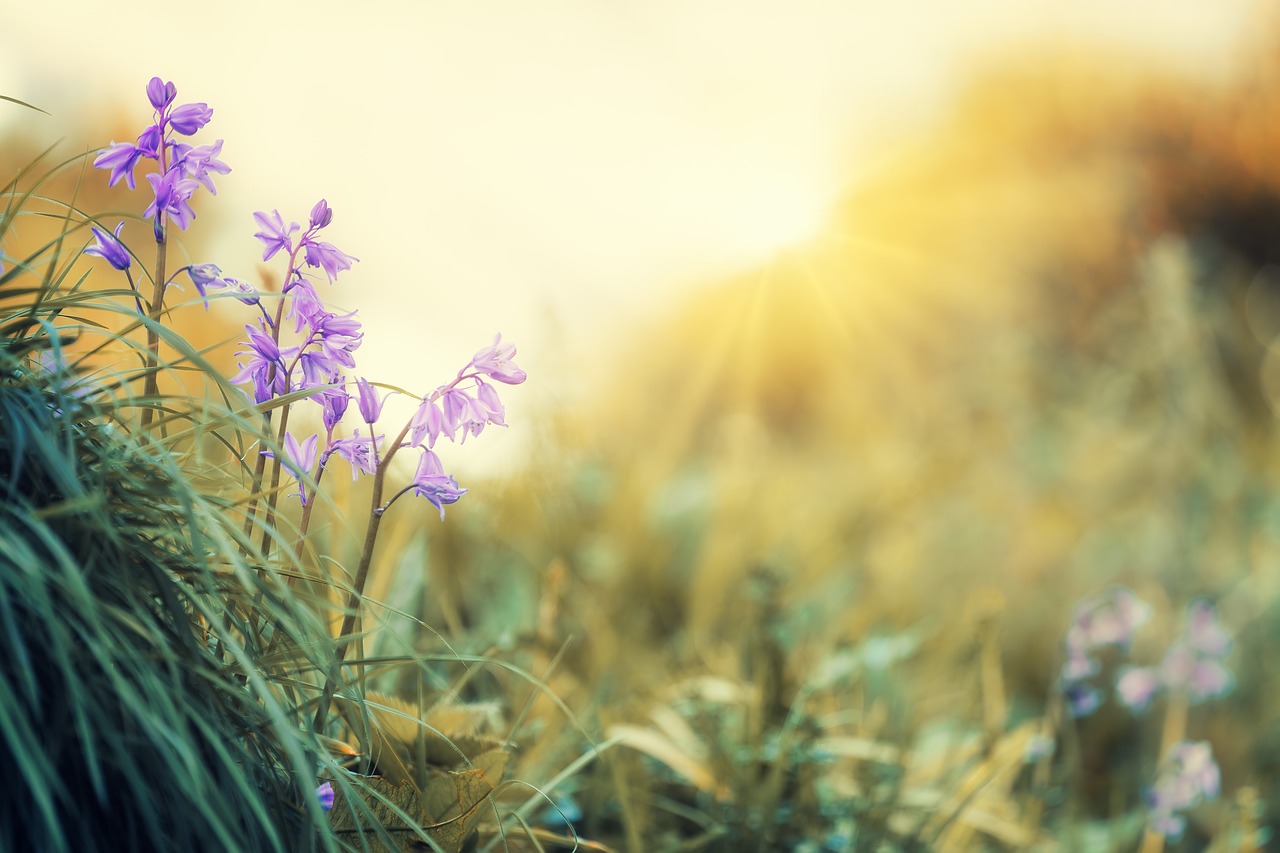
Lighting Techniques
When it comes to painting, lighting plays a pivotal role in conveying mood, depth, and realism. Think of it as the magic wand that transforms your still life from a simple arrangement into a breathtaking masterpiece. The way light interacts with your subjects can evoke emotions and draw the viewer into the scene. So, how do you harness this power? Let’s explore some essential lighting techniques that can elevate your artwork.
First and foremost, it’s crucial to understand the different types of lighting you can use in your compositions. Natural light, for instance, is a favorite among many artists. It changes throughout the day, casting different shadows and highlights. This variability can add a dynamic quality to your work. On the other hand, artificial lighting offers more control and consistency, allowing you to create specific effects. Consider using a combination of both to achieve a balanced and harmonious look.
Another key aspect to consider is the direction of your light source. The angle at which light hits your objects can dramatically alter their appearance. For instance, a light source positioned directly above can create stark shadows, emphasizing texture and form. Conversely, side lighting can enhance the contours of your subjects, adding a sense of depth. Experimenting with different angles can lead to surprising results, so don’t be afraid to play around!
To illustrate how lighting can impact your artwork, let’s look at a simple table comparing various lighting techniques:
| Lighting Technique | Description | Best Used For |
|---|---|---|
| Natural Light | Utilizes sunlight, varying throughout the day. | Still life, landscapes, and portraits. |
| Artificial Light | Consistent and controllable, often using lamps. | Studio work and controlled environments. |
| Backlighting | Light source behind the subject, creating silhouettes. | Creating dramatic effects and highlighting outlines. |
| Soft Lighting | Diffused light that reduces harsh shadows. | Portraits and delicate subjects. |
Moreover, understanding the quality of light is essential. Soft light, which is diffused and gentle, can create an ethereal look, perfect for portraits or floral arrangements. On the flip side, hard light casts sharp shadows and highlights, adding drama and contrast to your work. By manipulating the quality of light, you can influence the emotional tone of your piece.
Finally, don’t forget to consider the color temperature of your light source. Warm light can create a cozy, inviting atmosphere, while cool light can evoke a sense of calm or detachment. Mixing these temperatures can also yield interesting results, allowing you to enhance the overall mood of your painting.
In conclusion, mastering lighting techniques is an art in itself. By experimenting with different light sources, angles, and qualities, you can significantly enhance your still life compositions. Remember, the right lighting can turn an ordinary scene into an extraordinary work of art. So grab your brushes, set up your lights, and let the magic unfold!
- What is the best lighting for painting indoors? Natural light is often preferred, but soft artificial light can also work well.
- How can I create dramatic effects with lighting? Experiment with backlighting and hard light to cast interesting shadows.
- Can I mix different light sources? Yes, combining natural and artificial light can create unique effects.
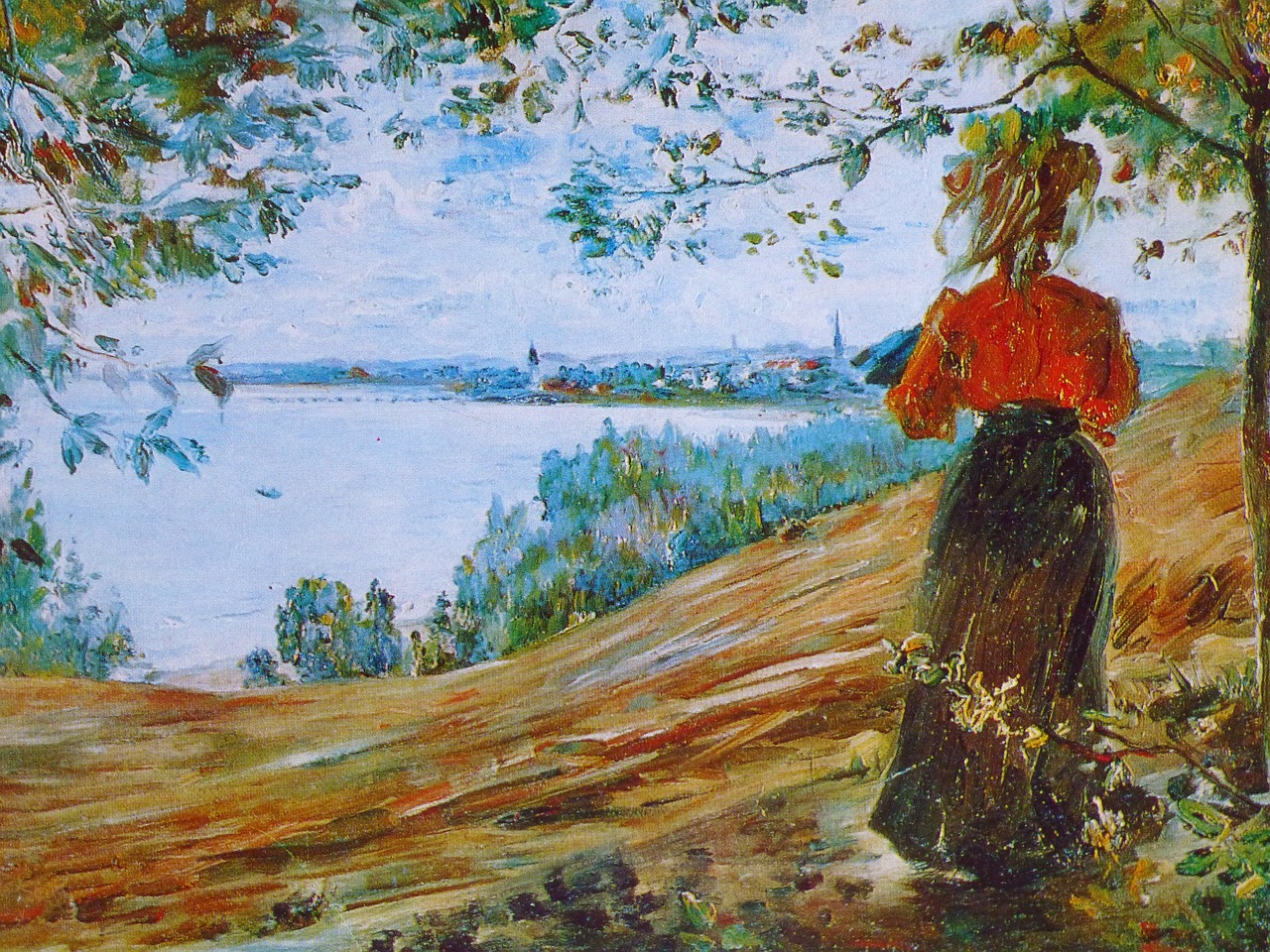
Final Touches and Presentation
As you near the completion of your artistic masterpiece, it's time to consider the final touches that will elevate your painting from good to breathtaking. Just like a chef adds a sprinkle of salt to enhance flavors, the finishing details can make all the difference in your artwork. One of the most crucial steps in this process is varnishing. This not only protects your painting from dust and damage but also enhances the colors, making them pop with vibrancy.
Varnishing is a technique that involves applying a clear layer over your finished painting. There are various types of varnishes available, each with its own unique properties. For instance, a gloss varnish can add a shiny finish, while a matte varnish offers a more subdued appearance. It's essential to choose the right varnish for your artwork based on the effect you want to achieve. Here’s a quick comparison:
| Type of Varnish | Finish | Best For |
|---|---|---|
| Gloss Varnish | Shiny | Enhancing colors and depth |
| Matte Varnish | Non-reflective | Softening colors and textures |
| Satin Varnish | Intermediate | Balanced finish |
Once you've chosen the appropriate varnish, make sure to apply it in a well-ventilated area. Use a clean brush to avoid any dust or debris from ruining your finish. Remember, applying varnish too soon can lead to smudging, so ensure your painting is completely dry before you begin this process.
After varnishing, it's time to think about how to present your work. The right frame can transform your painting, making it feel complete and ready for admiration. When selecting a frame, consider the style and colors of your artwork. A classic gold frame might beautifully complement a traditional piece, while a sleek black frame could enhance a modern painting. Here are a few tips for choosing the perfect frame:
- Match the frame style to the painting style.
- Consider the colors in your artwork when selecting a frame.
- Ensure the frame is sturdy enough to support your canvas.
Finally, think about how you will display your artwork. Whether you choose to hang it in your home, gift it to a friend, or sell it at a gallery, the way your painting is presented can significantly affect its impact. If you're planning to sell, consider adding a small plaque with your name and the title of the piece to give it a professional touch.
In conclusion, the final touches and presentation of your painting are not just afterthoughts; they are integral to the overall impact of your work. By carefully applying varnish, selecting the right frame, and considering how to display your art, you can ensure that your masterpiece receives the appreciation it deserves.
Q: How long should I wait to varnish my painting?
A: It's best to wait at least 6 months after completing an oil painting before applying varnish to ensure it is completely dry.
Q: Can I use spray varnish instead of brush-on varnish?
A: Yes, spray varnish can be an effective alternative, providing an even coat without brush marks. Just be sure to follow the manufacturer’s instructions for application.
Q: What if I don’t want to frame my painting?
A: If you prefer a frameless look, consider using a gallery wrap technique where the canvas is stretched around the edges of the frame for a clean finish.
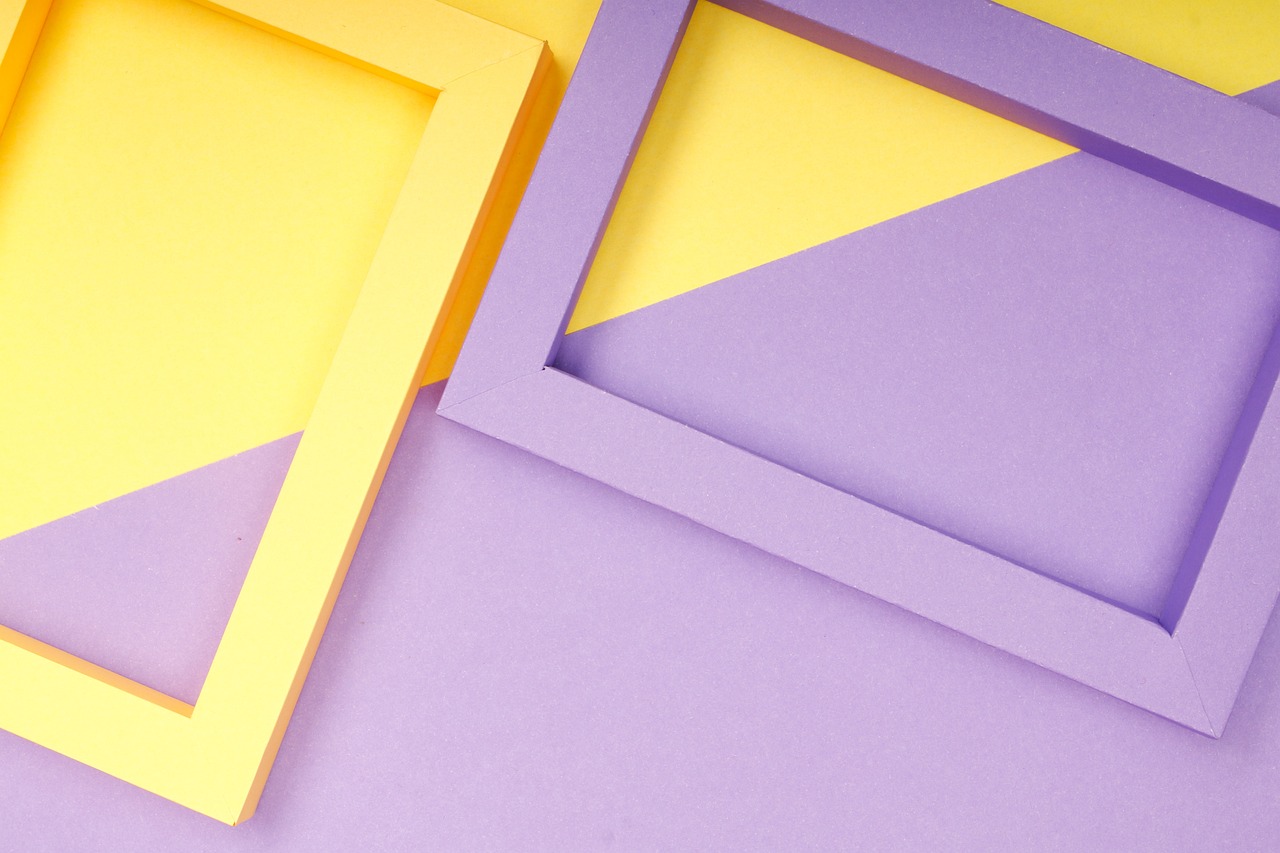
Varnishing Your Painting
Varnishing your painting is a crucial step in the artistic process that not only enhances the visual appeal of your artwork but also serves as a protective layer against dust, dirt, and environmental factors. Imagine your painting as a precious gem; without a protective casing, it can easily become dull and damaged. Varnish acts like that casing, preserving the vibrancy and integrity of your masterpiece.
There are various types of varnishes available, each with its own unique properties and applications. Understanding these differences is essential for selecting the right one for your artwork. Here’s a quick overview of the most common types of varnishes:
| Type of Varnish | Description | Best Use |
|---|---|---|
| Gloss Varnish | Provides a shiny finish that enhances colors and details. | Ideal for vibrant, colorful paintings. |
| Satin Varnish | Offers a soft sheen without being overly glossy. | Great for portraits and landscapes where a subtle finish is desired. |
| Matte Varnish | Gives a flat finish that reduces glare. | Perfect for works that require a more muted appearance. |
Before applying varnish, ensure that your painting is completely dry. This can take anywhere from a few days to several weeks, depending on the type of paint used and the thickness of the layers. Applying varnish too soon can trap moisture beneath the surface, leading to potential damage. Once you’re certain your painting is dry, follow these steps:
- Prepare Your Workspace: Choose a well-ventilated area and lay down protective covering to prevent any spills.
- Choose the Right Application Tool: A soft brush or spray can be used for application, depending on the varnish type.
- Apply Evenly: Whether brushing or spraying, ensure an even application to avoid streaks or uneven gloss.
- Allow to Dry: Follow the manufacturer's instructions for drying times before handling your painting.
After varnishing, it's important to consider how you will frame and display your artwork. The right frame not only protects your painting but also enhances its overall presentation. A well-chosen frame can complement your artwork and make it stand out in any setting.
In conclusion, varnishing is not merely an optional step in the painting process; it's an essential practice that can significantly affect the longevity and appearance of your artwork. By taking the time to understand the types of varnishes available and applying them correctly, you can ensure that your paintings remain as stunning as the day they were completed.
Q: How long should I wait before varnishing my painting?
A: It’s best to wait at least 6 months for oil paintings and 1-2 weeks for acrylics to ensure they are completely dry.
Q: Can I use a spray varnish instead of a brush-on varnish?
A: Yes, spray varnishes can provide an even coat without brush strokes, but be sure to use them in a well-ventilated area.
Q: How often should I varnish my paintings?
A: It's generally recommended to varnish your paintings every few years, depending on exposure to light and environmental conditions.
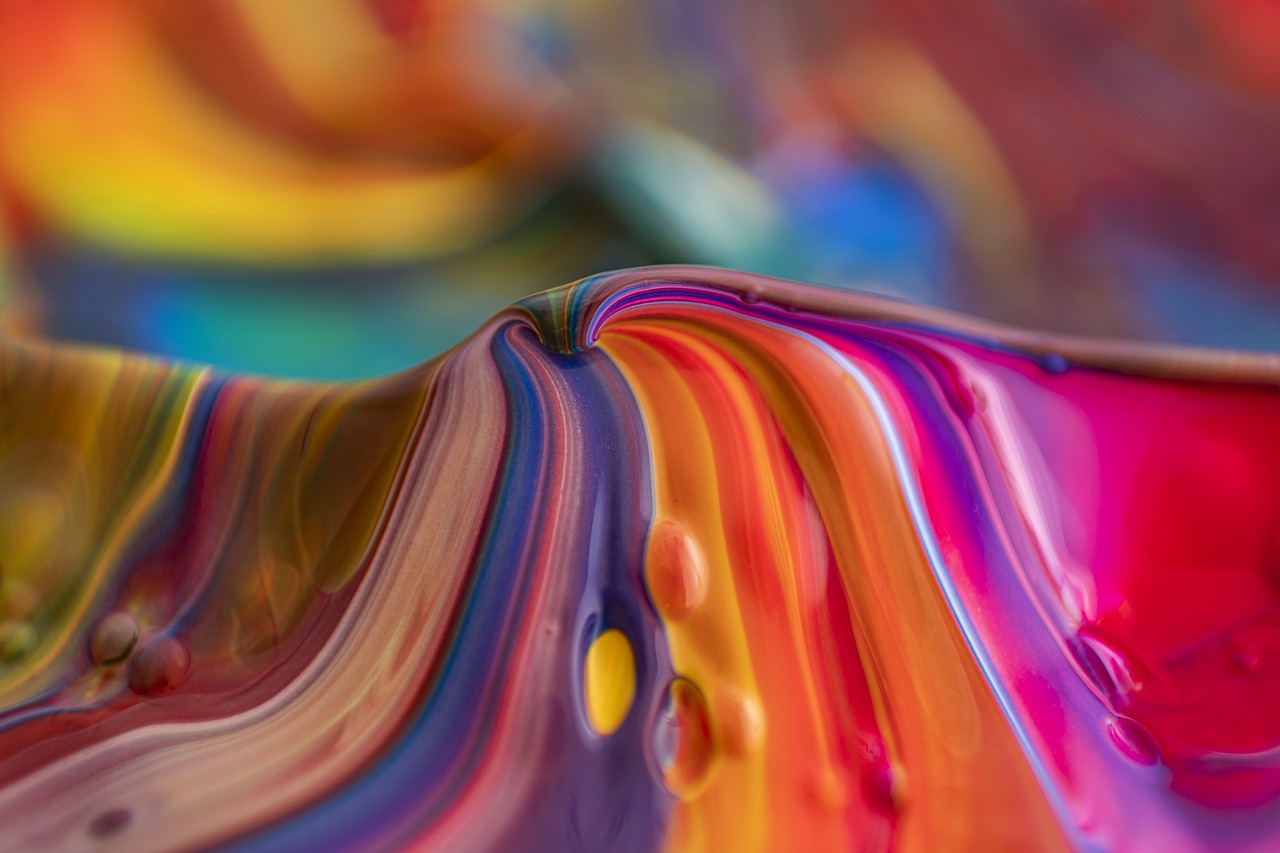
Framing and Display Options
When it comes to showcasing your artwork, the right framing and display options can make all the difference. Just like a well-tailored suit enhances a person's appearance, a carefully chosen frame can elevate your painting, drawing attention to its beauty and intricacies. Think of your artwork as a window into another world; the frame acts as the border that invites viewers to step inside. Choosing the right frame involves considering several factors, including the style of your painting, the colors used, and the overall ambiance of the space where it will be displayed.
First and foremost, let’s discuss the different types of frames available. You might opt for a traditional wooden frame, which adds a classic touch, or a sleek metal frame for a more modern look. Each option carries its own vibe and can either complement or clash with your artwork. For instance, a baroque-style frame with intricate details might be perfect for a painting inspired by the Old Masters, while a minimalist frame may suit contemporary works better. Consider the following frame types:
- Wooden Frames: Often hand-crafted, they provide warmth and a timeless quality.
- Metal Frames: Sleek and modern, they offer a contemporary feel.
- Canvas Floater Frames: These frames allow the canvas to float within the frame, emphasizing the artwork's edges.
- Shadow Box Frames: Perfect for three-dimensional pieces, they create depth and interest.
Next, it’s essential to consider the color of the frame. A frame should enhance your artwork without overpowering it. Neutral colors like black, white, or natural wood often work well, but don’t shy away from bolder choices if they resonate with the painting's palette. For instance, a vibrant red frame could beautifully complement a piece with warm tones, creating a striking focal point. Remember, the frame should harmonize with the artwork, not compete for attention.
Another crucial aspect is the matting. A mat can provide a visual break between the artwork and the frame, allowing the viewer’s eye to travel smoothly across the piece. It's like the icing on a cake; it enhances the overall presentation. When selecting a mat, consider its color and texture. A simple white or cream mat can give a classic look, while a colored or textured mat can add depth and personality to the display.
Finally, think about how you’ll display your framed artwork. Wall-mounted displays are traditional, but don’t overlook other options like easels or shelves. An easel can provide a dynamic way to showcase your work, allowing for easy adjustments in angle and height. If you have multiple pieces, consider creating a gallery wall, where a collection of frames in varying sizes and styles can create a stunning visual narrative. Just remember to maintain a cohesive theme to avoid a chaotic appearance.
In summary, framing and displaying your artwork is not just about protection; it’s about enhancing the overall aesthetic experience. Take your time to explore different options, and don’t hesitate to experiment. After all, the frame is not merely a border; it’s part of the artwork itself, a vital element that can either elevate or diminish its impact. So go ahead, frame your masterpiece with care and let it shine!
Q1: What type of frame is best for oil paintings?
A wooden frame is often preferred for oil paintings, as it offers a classic look and durability. However, a floater frame can also highlight the edges beautifully.
Q2: Should I use a mat for my artwork?
Using a mat is a great way to enhance your artwork’s presentation. It provides a visual break and can help to prevent the artwork from touching the glass, which can cause damage over time.
Q3: How do I choose the right color for my frame?
Consider the colors in your artwork. A neutral frame often works well, but if your piece has dominant colors, a complementary frame can create a striking effect.
Q4: Can I mix different frame styles in a gallery wall?
Yes! Mixing frame styles can create an eclectic look, but aim for a cohesive theme in terms of color or material to maintain harmony.
Frequently Asked Questions
- What materials do I need to start painting like the Old Masters?
To get started, you’ll need essential materials such as high-quality oil paints, a variety of brushes (like filbert and round), a suitable canvas or panel, and mediums like linseed oil. Don't forget a palette for mixing colors and a palette knife!
- Can I use modern paints instead of traditional ones?
Absolutely! While traditional paints like oil and tempera are preferred for authenticity, modern acrylics can also be used. Just keep in mind that the techniques might vary slightly, so experimentation is key!
- What is chiaroscuro, and why is it important?
Chiaroscuro is the technique of using strong contrasts between light and dark to create a sense of volume in painting. It's essential because it adds depth and drama to your artwork, making it visually striking and lifelike.
- How do I achieve realistic skin tones?
Mixing realistic skin tones can be tricky but rewarding! Start with a base of white, yellow ochre, and red, then adjust with small amounts of blue or brown to match the lighting conditions. Remember, skin tones vary greatly, so observe your subject closely!
- What techniques should I practice for portrait painting?
Focus on mastering anatomy, proportion, and expression. Start with basic shapes to outline the face, and gradually add details. Practice capturing likeness by observing your subject from different angles.
- How can I improve my still life compositions?
To enhance your still life compositions, consider the arrangement of objects, balance, and color harmony. Experiment with different lighting setups to see how they affect the mood and depth of your painting.
- What’s the best way to varnish my painting?
Varnishing is crucial for protecting your artwork. Use a spray varnish for even coverage or a brush-on varnish for more control. Apply it only when the paint is completely dry, and remember to work in a dust-free environment!
- How should I frame my artwork for display?
Choose a frame that complements your painting style and colors. A simple frame can enhance a classical piece, while a more ornate frame might suit a vibrant still life. Consider the overall aesthetic you want to achieve!



















